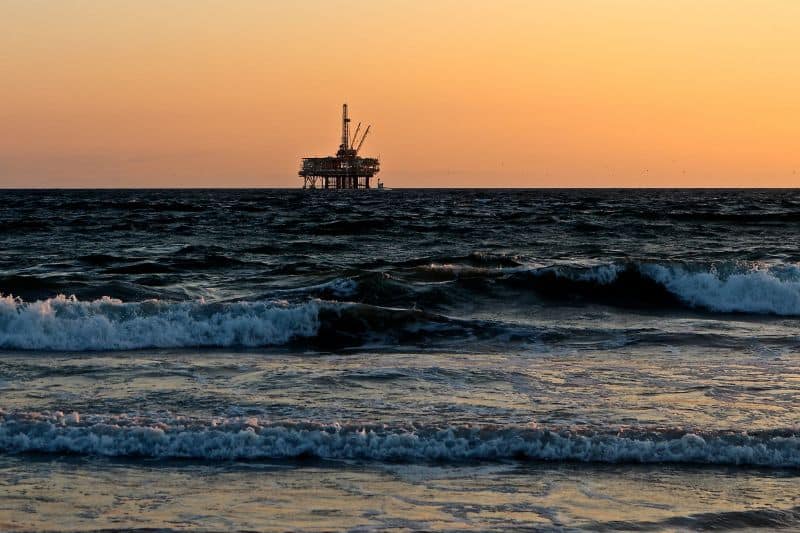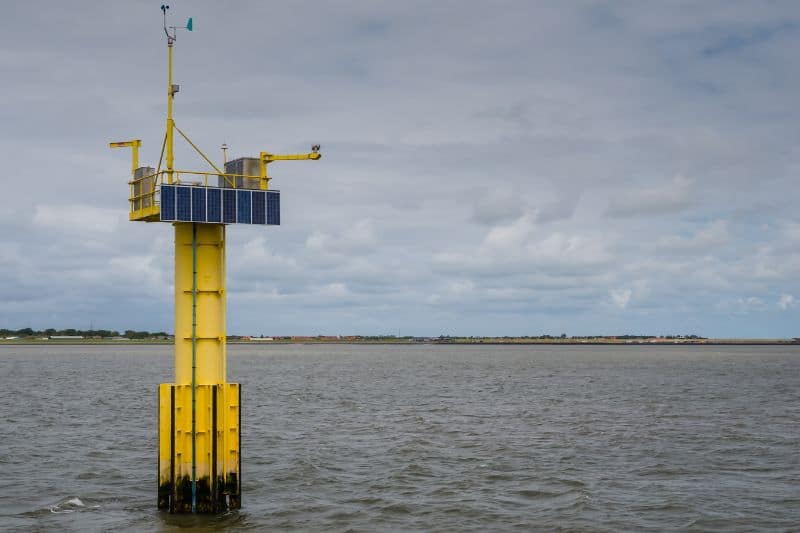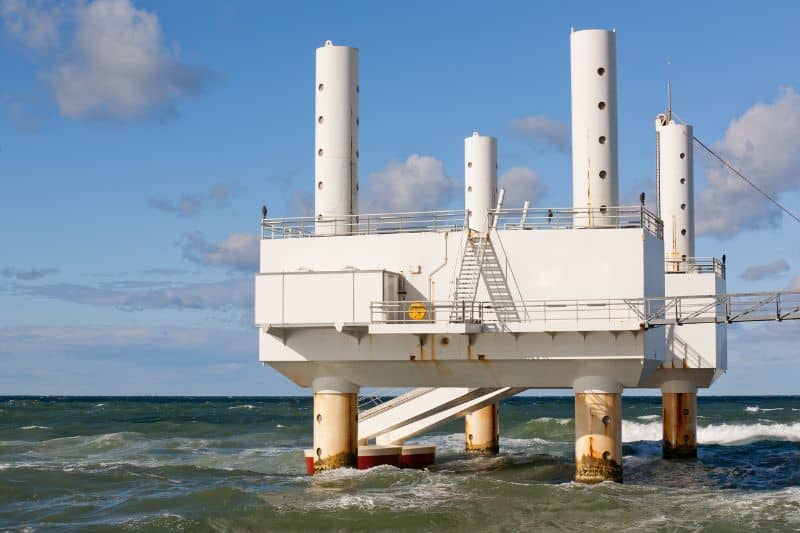Wave energy is a source of power that comes from the endless march of the waves as they roll onto the shore and then back out again.
Humans harness this power along the United States, Canada, Scotland, and Australia coastal regions. The energy that comes from the waves in the ocean sounds like a boundless, harmless supply.
But is it without its drawbacks? Let’s take a look.
Advantages of Wave Energy
Some of the advantages of wave energy include:
1. Renewable
The best thing about wave energy is that it will never run out. There will always be waves crashing upon the shores of nations near the populated coastal regions. The waves flow back from the shore, but they always return. That’s unlike fossil fuels, which are running out in some places in the world just as quickly as people can discover them.
Even more, wave energy offers an added advantage over other renewable energy sources. For instance, unlike ethanol, a corn product, waves are not limited by a season. They require no input from man to make their power, and they can always be counted on.
2. Environment Friendly
Also, unlike fossil fuels, creating power from waves creates no harmful byproducts such as gas, waste, and pollution. The energy from waves can be taken directly into electricity-producing machinery and used to power generators and power plants nearby. In today’s energy-powered world, a source of clean energy is hard to come by.
3. Abundant and Widely Available
Another benefit of using this energy is its nearness to places that can use it. Lots of big cities and harbors are next to the ocean and can harness the power of the waves for their use. Coastal cities tend to be well-populated, so many people can get used to wave energy plants.
4. Variety of Ways To Harness
Also, there are various ways to gather wave energy. Current gathering methods range from installed power plants with hydro turbines to seafaring vessels equipped with massive structures laid into the sea to gather the energy.

5. Easily Predictable
The biggest advantage wave power has over other alternative energy sources is that it is easily predictable and can be used to calculate the amount it can produce. Plus, the wave energy is consistent and proves much better than other sources dependent on wind or sun exposure.
6. Less Dependency on Foreign Oil Cos
Dependence on foreign companies for fossil fuels can be reduced if energy from wave power can be extracted up to its maximum. Not only will it help to curb air pollution, but it can also provide green jobs to millions of people.
7. No Damage to Land
Unlike fossil fuels, which cause massive damage to land as they can leave large holes while extracting energy from them, wave power does not cause any damage to the earth. It is safe, clean, and one of the preferred methods to extract energy from the ocean.
8. Reliable
Wave energy is a very reliable source of energy. This is because waves are almost always in motion. Although there are ebbs and tides, the average motion always remains.
Thus, energy can be harnessed continuously. It is a fact that the amount of energy that is produced and transported through the waves varies from season to season and from year to year. However, energy production is continuous.
9. Huge Amounts of Energy Can Be Produced
The amount of power that can be produced from the waves is absolutely enormous. It is so huge that the power density is approximately 30kW to 40kW per meter of a wave just along the shore. As we go deeper into the ocean, the power density increases to approximately 100kW. It is truly enormous.
10. Offshore Harnessing of Wave Power
Wave power can be harnessed offshore as well. The power plants harnessing the power could be put offshore. These could help solve the problem likely to emanate from the power plants being too close to the land. When the power plants are placed offshore, the energy potential of the waves increases, too.
Since there is a lot of flexibility in the placement of the offshore plants, the negative effects on the environment also decrease. The only possible problem with offshore power plants is that they are on the higher end cost-wise. But for the betterment of the environment, we must try taking this step.

Disadvantages of Wave Energy
As seen, wave energy has numerous benefits. But wait, there’s more to it than just a source of clean energy. It has its drawbacks as well.
Let’s look at some of them.
1. Suitable for Certain Locations
The biggest disadvantage to getting your energy from the waves is location. Only power plants and towns near the ocean will benefit directly from it. Because of its source, wave energy is not a viable power source for everyone. Landlocked nations and cities far from the sea have to find alternate sources of power, so wave energy is not the clean energy solution for everyone.
2. Effect on Marine Ecosystem
As clean as wave energy is, it still creates hazards for some of the creatures near it. Large machines must be put near and in the water to gather energy from the waves.
These machines disturb the seafloor, change the habitat of near-shore creatures (like crabs and starfish), and create noise that disturbs the sea life around them. There is also a danger of toxic chemicals used on wave energy platforms spilling and polluting the water near them.
3. Source of Disturbance for Private and Commercial Vessels
Another downside is that wave energy disturbs commercial and private vessels. Power plants that gather this energy have to be placed by the coastline to do their job, and they have to be near cities and other populated areas to be of much use to anybody.
However, these places are major thoroughfares for cargo ships, cruise ships, recreational vehicles, and beachgoers. All of these people and vessels will be disrupted by installing a wave energy-gathering source.
This means that government officials and private companies that want to invest in wave energy sources have to take into account and consider the needs of those they may be disturbing.
4. Wavelength
Wind power depends highly on wavelength, i.e., wave speed, wavelength, wavelength, and water density. They require a consistent flow of powerful waves to generate a significant amount of wave power.
Some areas experience unreliable wave behavior, and it becomes unpredictable to forecast accurate wave power and, therefore, cannot be trusted as a reliable energy source.

5. Weak Performance in Rough Weather
The performance of wave power drops significantly during rough weather. They must withstand rough weather.
6. Noise and Visual Pollution
Wave energy generators may be unpleasant for some who live close to coastal regions. They look like large machines working in the middle of the ocean and may destroy the beauty of the ocean.
Moreover, the machinery used for generating this energy produce noise pollution, but the noise is often covered by the noise of waves, which is much more than that of wave generators.
7. The Costs of Production
Although wave energy is good on almost all sides, one of its crucial side effects is the enormous cost of production. Energy production from the waves requires a huge and costly setup. Also, the lifespan of the technology used is quite uncertain in these cases. Since the waves are quite uncertain.
Sometimes, the waves can be so strong that they might severely and irreparably damage the equipment. The cost of repairing, as well as acquiring such machinery, is immense.
None of this is to say that wave energy cannot be useful, but those interested in using it to create power must look at both sides of the equation. They should consider the positives and negatives of this new energy source and consider who and what they may be disturbing. Who knows what the future holds for this newly-discovered energy source?
The future of wave energy is very bright. This form of energy has a lot of potential. With all the awareness growing among the masses regarding renewable and non-renewable resources, it is essential that the masses lean more towards the more sustainable energy resources.
Europe in 2020 has targeted to incorporate 20% wave energy in its total power consumption. Once this cycle begins, wave energy is bound to become a booming industry. It would also become the most sought-after source of sustainable energy. As its usage increases and it becomes more common, it can be expected that the costs will be normalized.
The most important thing that we must remember is that the oceans are nearly the largest energy source. Energy production is definitely constant and viable. Not only that, despite the costs, the ocean is also a source of absolutely clean and renewable energy sources.






